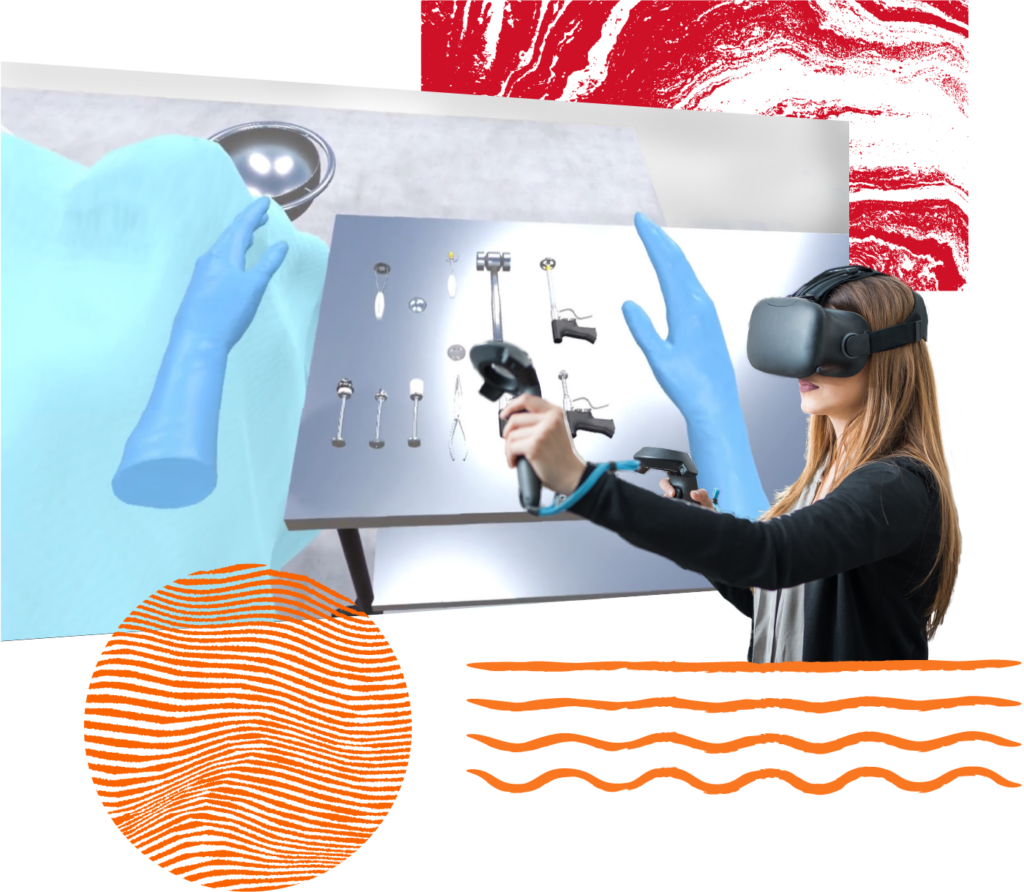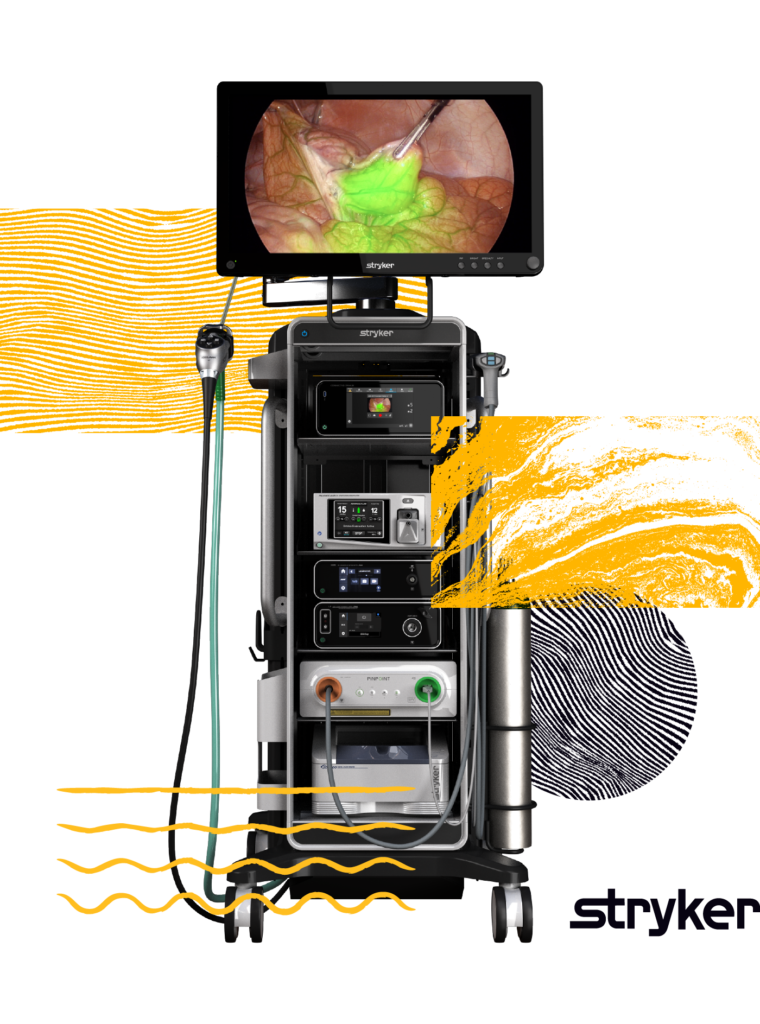As computer processors increase in power and shrink in size, technology has advanced to integrate with the physical world, becoming more ingrained with how we interact with people, products, brands, and the environment. AR can help with everyday tasks like leveling pictures on your wall or measuring the dimensions of that new bookcase you ordered, so it’s becoming known that AR and VR are joining virtual assistants as part of our daily lives.
For those of us running behind in the newest technology race, what exactly do VR, AR, and MR mean? And more importantly, what are some practical ways we can use VR, AR, and MR in business? Settle in for a quick overview and some streamlined examples.
First, wrap your head around XR
XR isn’t another new technology; it simply stands for “extended reality,” which is an umbrella term for all types of virtual, augmented, and mixed reality. The point of XR is to lessen confusion by organizing VR, AR, and MR all under one term. If you’re more of a math person, X is the variable that represents any combination of different realities (R).
So, let’s take a look at some real XR examples and brainstorm the ways you can innovate with VR, AR, and MR in your business.
VR brings the user into the virtual world
Virtual reality is pretty straightforward. The user puts on a VR headset and is dropped into a completely virtual environment. Well-executed VR is a gamer’s idea of utopia, but how is VR used in business?
How to innovate with VR to make a sales splash
Virtual reality as a sales tool is gaining popularity by the day. For sales reps, these innovations are especially helpful when selling complicated or large products, or where the environment plays a critical role in how people experience a product.
Say you’re a sales rep for a medical device company, and you want to demo a complex new product at a trade show. While images and videos are powerful selling tools, it’d be more impressive if you could transport your prospects—surgeons who perform their best under the bright lights and pressure of the operating room—to the environment they’ll use your product in. Good thing you can do exactly that.
Since you can’t set up a replica operating room in the trade show booth, you can instead hire a technology design company to develop a custom VR program. This will allow prospective customers to virtually step into the operating room and see how your new product can help to make the surgeries they perform less invasive and more successful by working with a virtual patient in a realistic environment. As a bonus, you can bring this VR experience in your briefcase to every demo and sales pitch after getting a great response and generating tons of leads at the trade show.

How to innovate with VR as an immersive training tool
Let’s go straight into another situation. As a fire chief, you’re always looking for safer, more efficient ways to train your team. The answer? A VR experience to train with virtual fires that walks your team through the proper procedures for entering a house and saving lives. You and your team face danger on a daily basis, but VR can give you the opportunity to practice safely.
Safety isn’t the only reason to use VR for training purposes, but it’s certainly one of the advantages, which is why it has become so popular in industrial and medical fields. Some other reasons you might consider training via VR could be:
- Research and Development: Maybe you’re developing a new product and want to test the functionality and features, and get user feedback, without creating a physical prototype.
- Cost: Maybe training using real products or tools could result in very costly mistakes that would damage expensive components or prevent further training.
- Convenience: Maybe having employees train independently, at their own pace, is what’s best for the team. Your workforce may have many remote employees spread out over the globe, making centralized training impractical.
AR brings the virtual world to reality
Where VR brings users into a virtual world, AR overlays 3D renderings, images, and information onto real world settings using a mobile device, such as a smartphone or tablet. AR straddles a broad spectrum of possibilities, and its flexibility, accessibility, and familiarity make it an awesome tool for sales and training.
Using AR to give your sales team a competitive edge
AR certainly has its advantages when it comes to being a useful tool for sales reps—namely, portability and accessibility. AR has been making an impact everywhere from one-on-one sales pitches to the trade show floor, and for good reason—it allows people to interact with, explore, and learn about new products, designs, and functions right from their mobile devices.
For example, you’re presenting new product designs in a meeting, but you don’t want sketches or 3D models to fall flat. You want your presentation to be memorable. Using Apple’s ARKit software for iOS and iPadOS devices, or Google’s ARCore for Android devices, you superimpose your designs as AR models so everyone in the meeting can see them right on the meeting room table. The best part? You don’t need to pass your phone around so everyone can see. Using the sharing potential of ARKit and ARCore, everyone can use their phones to view and make notes on your designs.
Using AR to train your team anywhere they are
There’s a lot to learn when it comes to doing any job, and employees need more flexibility, more specificity, and better access to training than ever before. As the workplace expands into the home office, coworking spaces, and across time zones, remote employees—or your sales team who are always on the go—need to be able to access the products that are central to their work. AR can help by giving everyone on your team the ability to interact with whatever your product happens to be, wherever they are, growing the knowledge they need to be successful.
AR isn’t only useful to get your products into the hands of remote workers or employees that travel on the regular. AR can also be used to help new hires become acquainted with the company, its products or services, and the customer experience.
For instance, imagine you’re an HR manager for an airline and you’re onboarding new hires. You’d love to give every new hire a look at the aircraft, but taking everyone to the airport is too much financial and logistical trouble. The answer? A custom AR experience. AR lets you place a downsized aircraft right on the meeting room floor that new hires can walk around and examine from any angle. With a touch of a button, they can pull out a working 3D model of an engine, break it apart, and even ignite it.
Or say that your potential customers are curious about the new features of a medical device—AR is an amazing tool to help them learn about it. The ability to include information directly on a 3D rendering of the device that your audience can manipulate and explore allows them to not only understand how it works, but see it happen.
Using AR to vision cast a future product
Physical prototypes and VR aren’t the only ways to experience products that don’t yet exist in their final forms—AR has the power to bring your future plans and visions into the present, too. It’s also easier and less costly to implement than VR. And because of its accessibility—only requiring a smartphone or tablet—using AR to pitch to internal decision makers or demo upcoming products at trade shows or during sales pitches is a great way to show your potential clients how you’re pushing boundaries.
Imagine your company developed a new surgical tool that will have a huge impact on how doctors and surgeons deliver care, and how patients receive treatment. However, this tool is still being prototyped, and even when complete would be too cumbersome to bring to trade shows or when visiting prospects in their offices. So, how can you build hype around your company’s innovations, pitch this new device, and start taking orders before it launches? With AR!
AR can demonstrate to potential customers what your new product can do and how it works, let them independently explore the new features, and interact with the most important functions. They can do all this in any location, whether it’s in your trade show booth or in their office. They can bring your product with them anywhere, using every opportunity to increase their knowledge, because they already have everything they need right in their pockets.


Using AR to get the inside scoop
Sometimes the most important innovations to your products are on the inside, or are the processes your products affect that can’t be seen with the human eye. AR can make all of these hidden treasures of innovation come to life for your potential customers. Reveal your product’s competitive advantages, to create new knowledge and increase understanding among your product’s audience, all to the benefit of getting more leads and closing more sales.
Imagine you’re in the automotive industry, working for a leading manufacturer on a new system to more efficiently store energy and power electric vehicles. No matter how much technology and innovation you put into making the best system on the market, your potential customers and industry experts will never see what your parts can actually do if all they have to look at are blueprints and wiring diagrams. That is, unless you give them a peek inside using AR.
By taking advantage of 3D rendering and digital technology, you can show your prospective customers exactly how the new system harnesses and uses electricity, and puts all of this energy to work to create a more powerful, more efficient, and more effective electric vehicle. While your competition is busy explaining how their new system works using diagrams that require an engineering degree to understand, you can show anyone—from technical specialists and engineers to the end user—what makes your electric vehicle technology the right choice.

What is MR?
Mixed reality (MR) is an abstract concept, and no one fully agrees on its exact form. Right now, there are two main schools of MR thought.
A futuristic formula: AR + VR = MR
Picture this: you’re blasting robots crawling through your kitchen walls, then a portal opens. You step through the portal onto a whole new planet. This version of MR switches seamlessly between AR and VR experiences, so you can have the best of both worlds.
Cool, right? And unfortunately, too cool to be real—at least for now. While you may hear this definition of MR being tossed around, it’s more like the Holy Grail of all things XR. Look out for this functionality in the future.
What is MR? AR reaching its full potential?
MR has the potential to take augmented reality to a whole new level. If AR and MR are a ladder, MR is the top rung. This might be difficult to comprehend, but imagine wearing a headset with a transparent lens that allows you to see and interact with virtual characters and objects in your real environment without wearing the digitally-enhanced gloves that VR systems require. That’s MR!
Though this might seem like technology of the future—and in many ways, it still is, as current iterations of MR are not as perfect as we might imagine—the future isn’t that far off. Microsoft proudly calls its HoloLens headset MR, letting users interact with the virtual world just like in the robot example above, minus the portal to take you into a completely virtual world.
The Limitless Possibilities of XR
Training and sales aren’t the only practical uses for AR and VR in business. There’s an upsurge in doctors, surgeons, and medical students using AR to push the boundaries of medicine, and new AR, VR, and MR technologies are emerging all the time.
Don’t believe the myth that AR and VR are only for games. These technologies offer endless innovative, flexible, and cost-saving possibilities for your business.
Are you ready to step into the future?
Look ahead with the latest AR, VR, and MR tactics for your products.
See now→